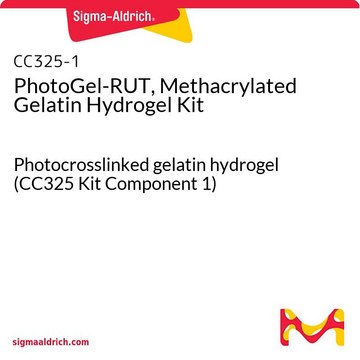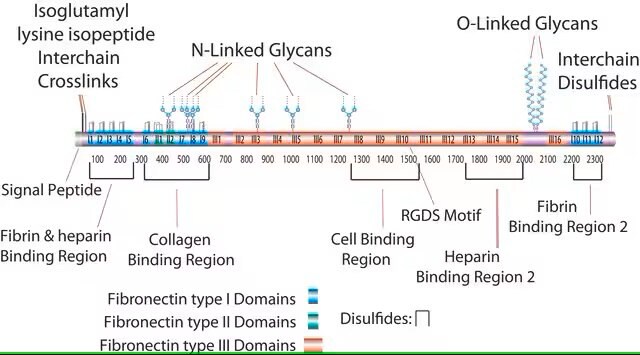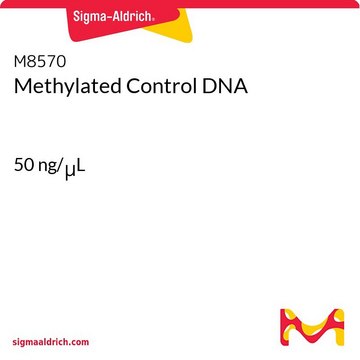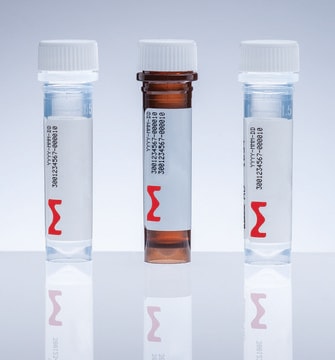推薦產品
品質等級
形狀
(transparent gel)
黏度
0.1-1 Pa.s (high shear)
200-2500 Pa.s low (shear)
凝膠強度
(Storage modulus after UV crosslinking (kPa) 2-6)
一般說明
The shear-thinning gelatin-based bioink is a extracellular matrix (ECM)- mimicking ink that provides all the benefits of gelatin with the addition of shear thinning behaviour, thereby allowing easy printing at 37°C.
Based on gelatin derived from natural collagen, this bioink has been modified with photocrosslinkable functional groups which enables unpreedneted printing efficiency of a scaffold that resembes the natural ECM and has exptionally high cell viabilities. The shear-thinning gelatin-based bioink combines all the benefits of conventional gelatin or GelMA with the improved printability thanks to its shear thinning behavior. It can be printed at 37°C in the presence or absence of cells, and overcomes the narrow processing range limitations associated with printing conventional GelMA based bioinks. After printing, the material can be photocrosslinked, resunting in a physiologically stable hydrogel.
Processing:
At high shear rates, this bioink exhibits a low viscotiy which allows easy injection from the printing nozzle, At low shear rates, it has a high viscosity, which is required for shape retention after deposition. This is favorable for extrusion-based 3D bioprinters as the ink should easily be injected through the printing nozzle and the post-injetion flow should be minimized to prevent structural deformation. These properties are very rarely seen in conventional gelatin-based ink, giving this bioink an advantage over traditional bioinks.
Based on gelatin derived from natural collagen, this bioink has been modified with photocrosslinkable functional groups which enables unpreedneted printing efficiency of a scaffold that resembes the natural ECM and has exptionally high cell viabilities. The shear-thinning gelatin-based bioink combines all the benefits of conventional gelatin or GelMA with the improved printability thanks to its shear thinning behavior. It can be printed at 37°C in the presence or absence of cells, and overcomes the narrow processing range limitations associated with printing conventional GelMA based bioinks. After printing, the material can be photocrosslinked, resunting in a physiologically stable hydrogel.
Processing:
At high shear rates, this bioink exhibits a low viscotiy which allows easy injection from the printing nozzle, At low shear rates, it has a high viscosity, which is required for shape retention after deposition. This is favorable for extrusion-based 3D bioprinters as the ink should easily be injected through the printing nozzle and the post-injetion flow should be minimized to prevent structural deformation. These properties are very rarely seen in conventional gelatin-based ink, giving this bioink an advantage over traditional bioinks.
應用
Applications: :
3D bioprinting
Tissue engineering
In vitro modeling
3D bioprinting
Tissue engineering
In vitro modeling
特點和優勢
Features and Benefits:
- Easy printing - Shear thinning behavior enables easy deposition at 37°C
- Biodegradability - Enables cellular remodeling of the printed matrix
- Easy handling - Delivered in a ready-to-use cartridge - UV curable
- Efficient UV-based crosslinking
- Reproducibility - Strict quality control
Cell interactive - Material is biocompatible mimics natural ECM envrionment
- Easy printing - Shear thinning behavior enables easy deposition at 37°C
- Biodegradability - Enables cellular remodeling of the printed matrix
- Easy handling - Delivered in a ready-to-use cartridge - UV curable
- Efficient UV-based crosslinking
- Reproducibility - Strict quality control
Cell interactive - Material is biocompatible mimics natural ECM envrionment
儲存類別代碼
10 - Combustible liquids
水污染物質分類(WGK)
WGK 3
閃點(°F)
Not applicable
閃點(°C)
Not applicable
我們的科學家團隊在所有研究領域都有豐富的經驗,包括生命科學、材料科學、化學合成、色譜、分析等.
聯絡技術服務









